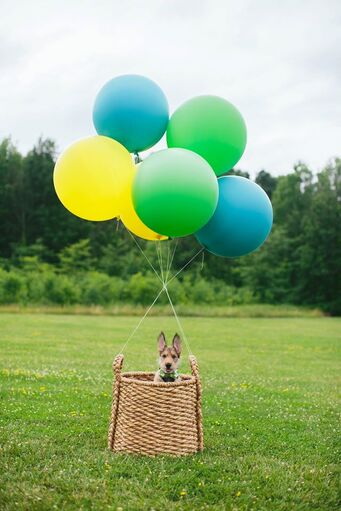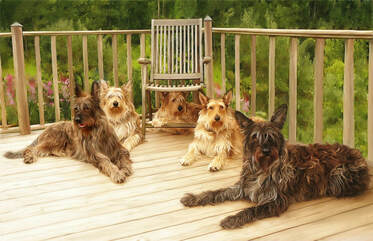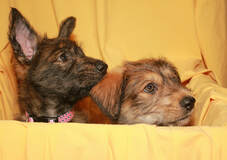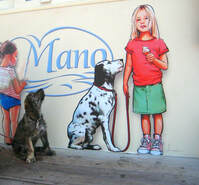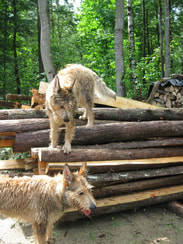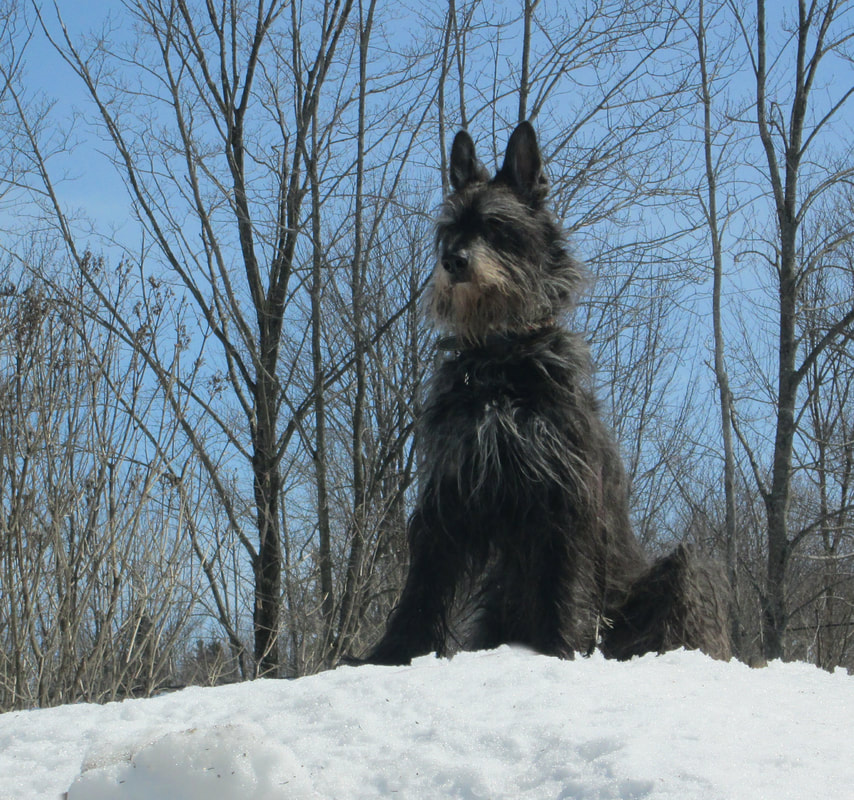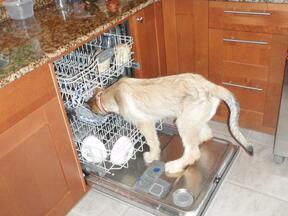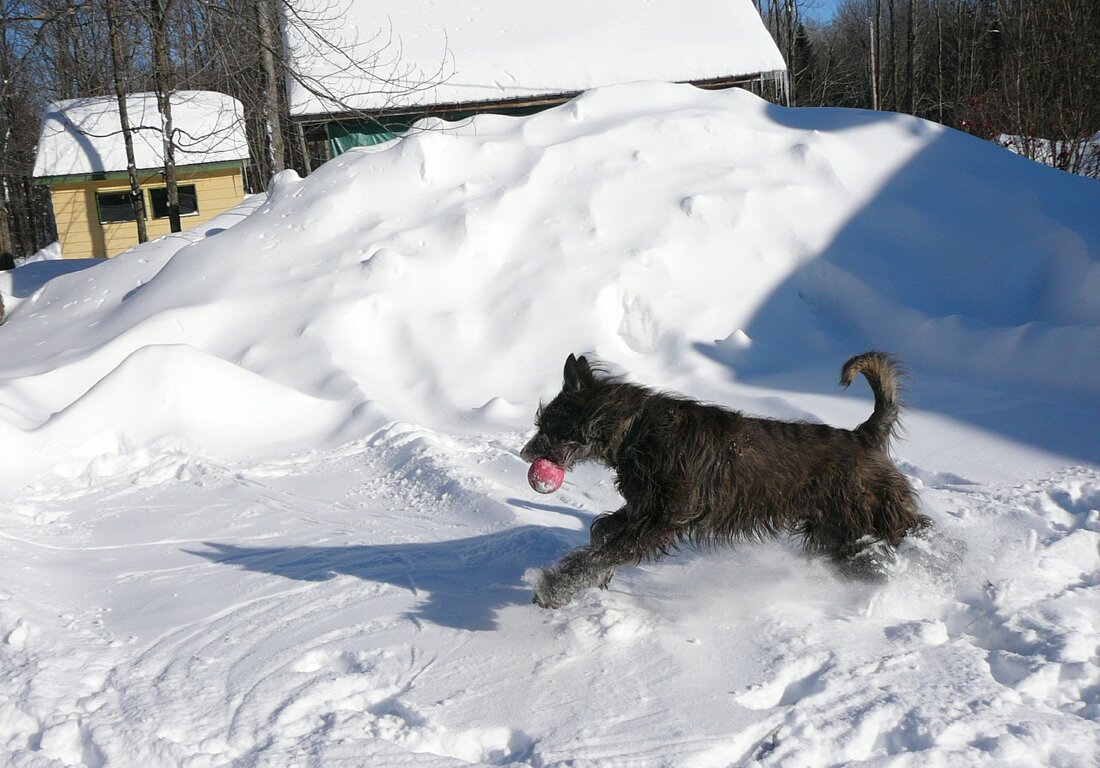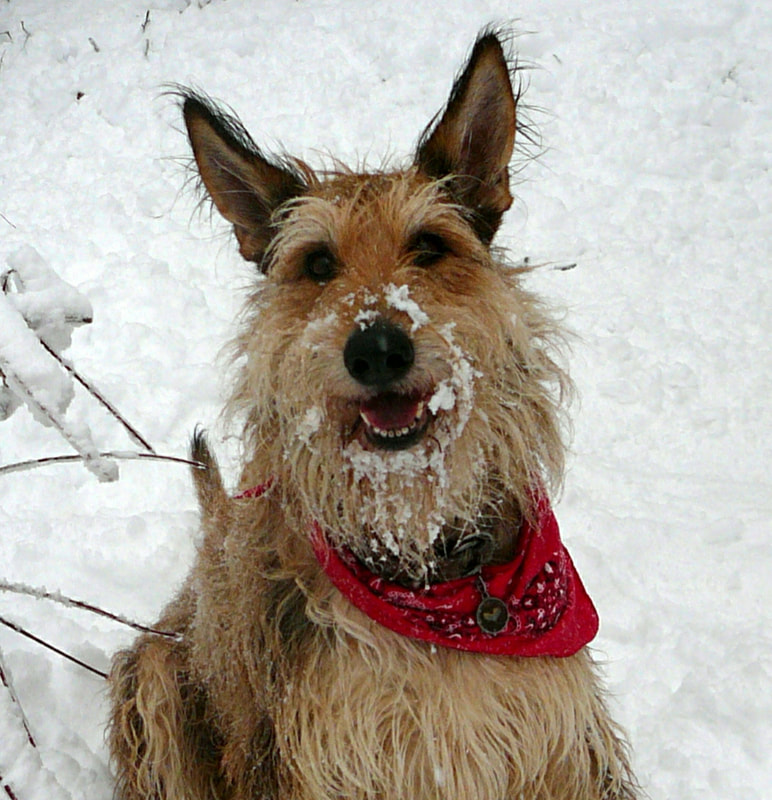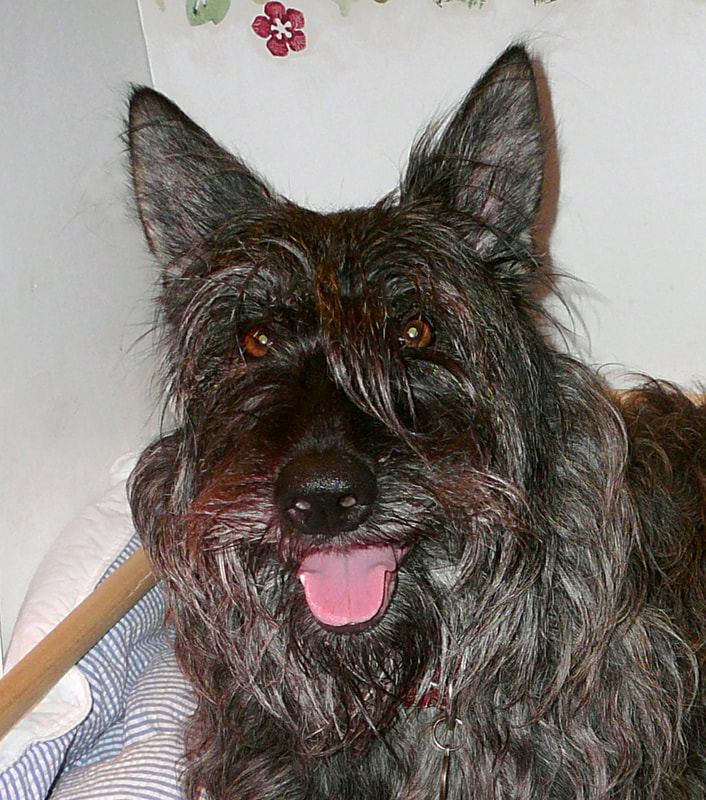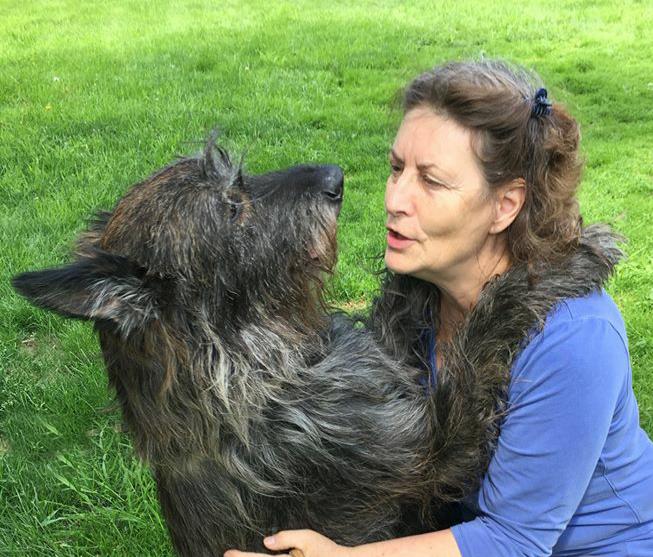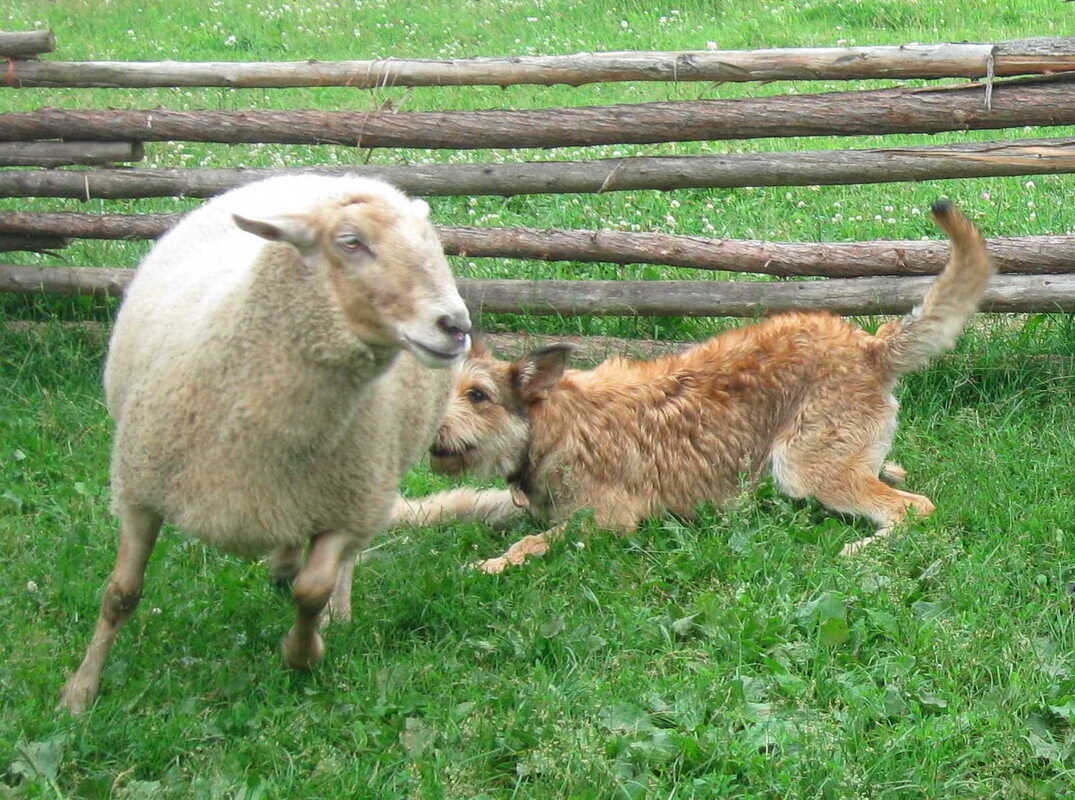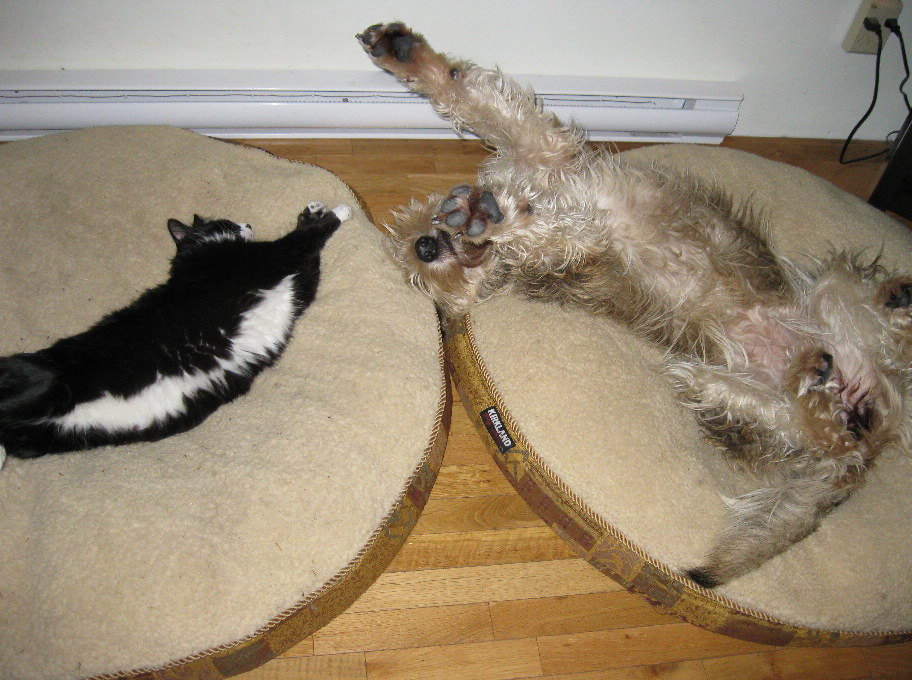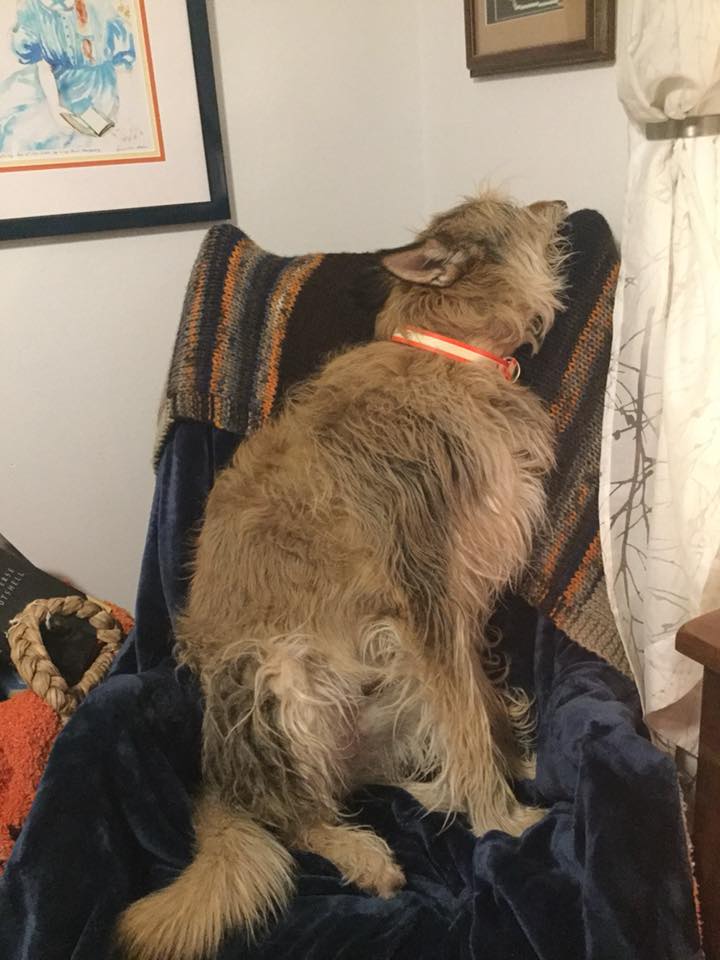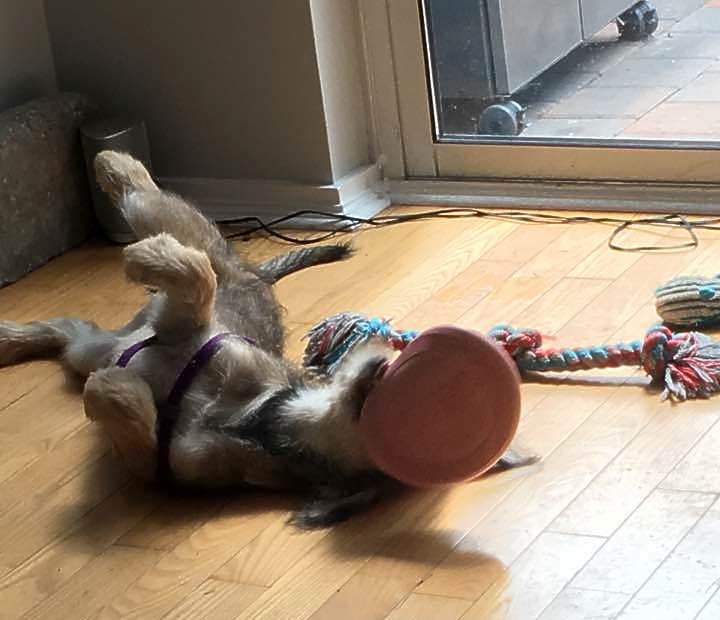ALL YOU EVER WANTED TO KNOW ABOUT BERGER PICARDS
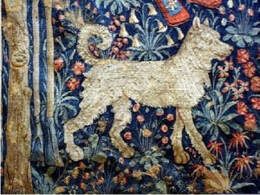
On this page I will focus on information about the Berger Picard that you might not have already read on other websites. For information on their history, their breed standard, or specific needs and abilities, please visit the National breed Club websites I have listed on the "useful links" page. I will try here to share the first hand experience I've acquired by living with six Berger Picards, boarding many others on a regular basis, rearing several litters, and healing the broken hearts of rescued Picards. For the last twelve years I've entirely devoted my life to the Berger Picard and I humbly hope my experience can help others better understand this truly unique and amazing breed.
The Berger Picard is a rare breed; numbers worldwide are estimated at 5,500 Picards. Although it is classified in the herding breed it could also find its place in the primitive dogs` registry as it has many of the primitive attributes. These are described as breeds maintaining ancient genes, primitive appearance, and retention of wild traits (Beregovoy & Porter, 2007). These breeds are linked to a specific country, region, or location, their typical morphology know as long-term pariah morphology is characterized by wedge shape heads, erect ears for optimal sound detection, almond eyes, medium size build, 20 to 25 inches at the wither and long curved tails... and if this doesn't sound enough like a Picard let's read on... Primitive dogs are also alert, extremely intelligent, independent, more fearful of strangers and less trainable than modern dogs. I must admit I'm not in total agreement with the last part of this sentence. I think primitive breeds are as trainable as any other breed, but they just won't obey blindly. They have to understand what they are doing. Today these dogs maintain many of the behaviours of their ancestors, even after post-Victorian selective breeding (Coppinger & Coppinger, 2001). Earlier there was a concentrated effort by breeders to develop a breed based on selecting the traits they deemed most desirable; dogs were bred according to function, not looks. Canines needed to be able to perform their specific tasks as farm dogs, guardian dogs, hunting dogs, sledding dogs or herding dogs.
The reason I bring up the similarities between the primitive dogs and the Berger Picards is to highlight the uniqueness of this breed and the awesome gift nature is offering us. I am amazed to see this old 13th century tapestry of a herding dog and realize how much it resembles our Picards. If the Picard travelled through time barely untouched by man, don't we all, as Picard lovers, have the responsibility to preserve the integrity this incredible time capsule?
The Berger Picard is a rare breed; numbers worldwide are estimated at 5,500 Picards. Although it is classified in the herding breed it could also find its place in the primitive dogs` registry as it has many of the primitive attributes. These are described as breeds maintaining ancient genes, primitive appearance, and retention of wild traits (Beregovoy & Porter, 2007). These breeds are linked to a specific country, region, or location, their typical morphology know as long-term pariah morphology is characterized by wedge shape heads, erect ears for optimal sound detection, almond eyes, medium size build, 20 to 25 inches at the wither and long curved tails... and if this doesn't sound enough like a Picard let's read on... Primitive dogs are also alert, extremely intelligent, independent, more fearful of strangers and less trainable than modern dogs. I must admit I'm not in total agreement with the last part of this sentence. I think primitive breeds are as trainable as any other breed, but they just won't obey blindly. They have to understand what they are doing. Today these dogs maintain many of the behaviours of their ancestors, even after post-Victorian selective breeding (Coppinger & Coppinger, 2001). Earlier there was a concentrated effort by breeders to develop a breed based on selecting the traits they deemed most desirable; dogs were bred according to function, not looks. Canines needed to be able to perform their specific tasks as farm dogs, guardian dogs, hunting dogs, sledding dogs or herding dogs.
The reason I bring up the similarities between the primitive dogs and the Berger Picards is to highlight the uniqueness of this breed and the awesome gift nature is offering us. I am amazed to see this old 13th century tapestry of a herding dog and realize how much it resembles our Picards. If the Picard travelled through time barely untouched by man, don't we all, as Picard lovers, have the responsibility to preserve the integrity this incredible time capsule?
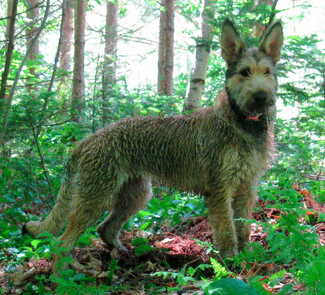
The way Picards are built
Everything in this breed is geared towards function! This hard working herding dog is a very versatile breed, acting as a tending dog for sheep and cattle, as a guard dog for the farm and home, as a vermin exterminator in the barn, as well as a protector and companion of all family members. When living with Picards and observing them closely, many of these function oriented attributes become obvious. Not to get too technical I will only mention that the bone structure is a major component of a herding dog. Bones have to be strong yet not heavy, shoulder blades laid back in a good diagonal position to allow the most efficient reach of the forearm. The front assembly must be straight and well built, as it supports 60% of the dog's weight, and should be well balanced with the rear to provide sufficient drive. These are the garantees of an effortless gait, allowing the Picard to work long days in the field. The gait of a Berger Picard is smooth and seems effortless, as if floating above the ground. I'm always amazed to see how light footed these dogs are when I see them jump over a fence or on a bed, as if their pads were mounted on springs; yet they do not have a bouncy gait.
If we look at more distinctive traits of the Picard like the tail or the ears we will also realize they serve a herding purpose. The tail, roughly between 43 and 48 cm long has the distinctive "J" hook at the end. As part of their daily tasks working Picards often have to make sharp turns to keep up with the herd, or cut them off to redirect them. This is where the long tail plays a crucial role as it serves as a helm. The Picard tail is certainly one of the signature features of this herding breed but it's more than just pretty; it has a function. Another signature feature of the Picard is the ears... Oh those ears, so cute, so lively, so unique! But beyond being fabulously attractive, these big ears are a life saver for the herd under the Picard's care. As least eighteen muscles make those erect ears rotate, tilt and rise. This mobility allows them to pin oint the exact location of a sound faster, farther, and way beyond the human spectrum; enabling them to sound the alarm well before the danger arrives. I could keep going on about the relation between features and function as so many attributes of the Picard are in direct relation tothe job he was bred for; attibutes such as eye colour, the shape of the eyebrows, the form of the rib cage, the position of the elbows, etc... but before I close this chapter I'd like to address one last signature feature. the coat.
The Berger Picard originates from the Picardie region of France; it is a region swept by the cold wind of the North Sea and a region that receives record amounts of rain. The people from the Picardie region are hard working people; rain or shine the work has to be done and they have the perfect dog to accompany them in the field: The Picard. The coat of the Picard is a harsh coat that has the very specific trait of seperating into flames; these flames or little clusters of fur, function to direct the rain away from the body, leaving the undercoat nice and dry. The Picard is the one breed I know that dries the fastest, a good shake and the are dry in no time! This is one of the Picard's very special features, one I think we must preserve because in itself it tells the story of the Picard, his function, and his origin.
Everything in this breed is geared towards function! This hard working herding dog is a very versatile breed, acting as a tending dog for sheep and cattle, as a guard dog for the farm and home, as a vermin exterminator in the barn, as well as a protector and companion of all family members. When living with Picards and observing them closely, many of these function oriented attributes become obvious. Not to get too technical I will only mention that the bone structure is a major component of a herding dog. Bones have to be strong yet not heavy, shoulder blades laid back in a good diagonal position to allow the most efficient reach of the forearm. The front assembly must be straight and well built, as it supports 60% of the dog's weight, and should be well balanced with the rear to provide sufficient drive. These are the garantees of an effortless gait, allowing the Picard to work long days in the field. The gait of a Berger Picard is smooth and seems effortless, as if floating above the ground. I'm always amazed to see how light footed these dogs are when I see them jump over a fence or on a bed, as if their pads were mounted on springs; yet they do not have a bouncy gait.
If we look at more distinctive traits of the Picard like the tail or the ears we will also realize they serve a herding purpose. The tail, roughly between 43 and 48 cm long has the distinctive "J" hook at the end. As part of their daily tasks working Picards often have to make sharp turns to keep up with the herd, or cut them off to redirect them. This is where the long tail plays a crucial role as it serves as a helm. The Picard tail is certainly one of the signature features of this herding breed but it's more than just pretty; it has a function. Another signature feature of the Picard is the ears... Oh those ears, so cute, so lively, so unique! But beyond being fabulously attractive, these big ears are a life saver for the herd under the Picard's care. As least eighteen muscles make those erect ears rotate, tilt and rise. This mobility allows them to pin oint the exact location of a sound faster, farther, and way beyond the human spectrum; enabling them to sound the alarm well before the danger arrives. I could keep going on about the relation between features and function as so many attributes of the Picard are in direct relation tothe job he was bred for; attibutes such as eye colour, the shape of the eyebrows, the form of the rib cage, the position of the elbows, etc... but before I close this chapter I'd like to address one last signature feature. the coat.
The Berger Picard originates from the Picardie region of France; it is a region swept by the cold wind of the North Sea and a region that receives record amounts of rain. The people from the Picardie region are hard working people; rain or shine the work has to be done and they have the perfect dog to accompany them in the field: The Picard. The coat of the Picard is a harsh coat that has the very specific trait of seperating into flames; these flames or little clusters of fur, function to direct the rain away from the body, leaving the undercoat nice and dry. The Picard is the one breed I know that dries the fastest, a good shake and the are dry in no time! This is one of the Picard's very special features, one I think we must preserve because in itself it tells the story of the Picard, his function, and his origin.
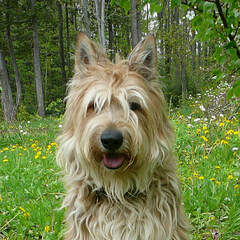
The way Picards think
In the whole animal kingdom, there is no species with so much genetic variance as dogs; the huge diversity in dogs does not only apply to their looks but also to the way they think. What makes the Berger Picard unique is that they simply have a mind of their own triggered by their instincts; instincts which have not been bred out of them by selective breeding over decades or centuries. We all agree that the Picard is classified as a herding dog, but in fact, he is an extremely versatile dog;. He is a true farm dog able to adapt to the suburb, and even the city if needed. He is most content, when not herding sheep or cattle, to follow his human around, keep the cats in check, chase the rodents, and supervise his territory. Basically doing whatever his human is doing and a little more... don't forget this is a dog with initiative. I cannot tell you how Picards think, I guess no one truly can; but by closely observing their behaviour one can certainly guess their motivations and draw conclusions. The Picard is a dog that needs a family, he is a true partner who has his own opinion, he is extremely sensitive and compassionate, he needs to be able to trust you in order to follow your leadership, he is forgiving and extremely loyal. He is smart and will try to pull a few fast ones on you, be indulgent, he is only testing your limits. He knows when you are happy and that is probably why he does so many weird things that will make you laugh on a daily basis.
In the whole animal kingdom, there is no species with so much genetic variance as dogs; the huge diversity in dogs does not only apply to their looks but also to the way they think. What makes the Berger Picard unique is that they simply have a mind of their own triggered by their instincts; instincts which have not been bred out of them by selective breeding over decades or centuries. We all agree that the Picard is classified as a herding dog, but in fact, he is an extremely versatile dog;. He is a true farm dog able to adapt to the suburb, and even the city if needed. He is most content, when not herding sheep or cattle, to follow his human around, keep the cats in check, chase the rodents, and supervise his territory. Basically doing whatever his human is doing and a little more... don't forget this is a dog with initiative. I cannot tell you how Picards think, I guess no one truly can; but by closely observing their behaviour one can certainly guess their motivations and draw conclusions. The Picard is a dog that needs a family, he is a true partner who has his own opinion, he is extremely sensitive and compassionate, he needs to be able to trust you in order to follow your leadership, he is forgiving and extremely loyal. He is smart and will try to pull a few fast ones on you, be indulgent, he is only testing your limits. He knows when you are happy and that is probably why he does so many weird things that will make you laugh on a daily basis.
a breed like no other!
|
Be prepared to meet a breed like no other... curious, adventurous, courageous, creative, athletic, goofy, determined, sensitive, and so terribly lovable; but you must win his respect and trust! They are everything you have read about plus an intensity factor no words can quite describe.
|
the Berger Picard's lovable quirks!
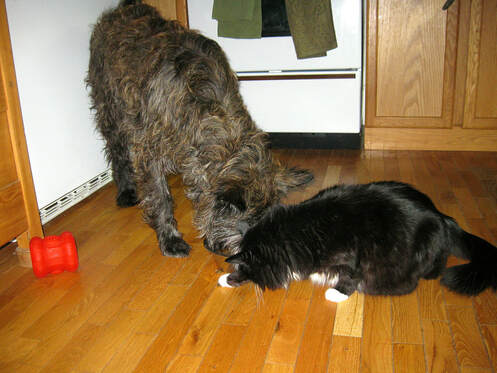 Ziva putting little morsels of meat beside her bowl for later or for a best friend
Ziva putting little morsels of meat beside her bowl for later or for a best friend
The Picards'
unusual eating habits!
Picards are known to be picky eaters. In fact, just like children, I think it has a lot to do with how they are introduced to different types of food as very young dogs. However this is not what I wish to address here, but rather the way they interact with their food. If you are new to the breed the first thing you might notice is the urge your young puppy has to put his paws in his water bowl. don't worry they grow out of it. Another unusual eating habit Picards have is to sort their food, especially if it is diversified. They will select certain morsels of food, put them aside, eat the content of the bowl, and then eat what they have put aside. That is unless they decide to hide them somewhere for later. Beware if you have cats; they might take this as an invitation to share.
unusual eating habits!
Picards are known to be picky eaters. In fact, just like children, I think it has a lot to do with how they are introduced to different types of food as very young dogs. However this is not what I wish to address here, but rather the way they interact with their food. If you are new to the breed the first thing you might notice is the urge your young puppy has to put his paws in his water bowl. don't worry they grow out of it. Another unusual eating habit Picards have is to sort their food, especially if it is diversified. They will select certain morsels of food, put them aside, eat the content of the bowl, and then eat what they have put aside. That is unless they decide to hide them somewhere for later. Beware if you have cats; they might take this as an invitation to share.
Noble Picard Kennel
Copyright © 2022

